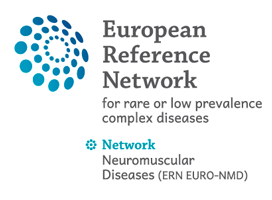09 Feb 2022
Clinical and neuroradiological correlates of sleep in myotonic dystrophy type 1
Authors:
Mark J Hamilton , Antonio Atalaia , John McLean , Sarah A Cumming , Jonathan J Evans , Bob Ballantyne ,Ravi Jampana , The Scottish Myotonic Dystrophy Consortium ,Cheryl Longman , Eric Livingston , Ellen van der Plas , Timothy Koscik , Peggy Nopoulos , Maria Elena Farrugia , Darren G Monckton
Abnormalities of sleep are common in myotonic dystrophy type 1 (DM1), but few
previous studies have combined polysomnography with detailed clinical measures
and brain imaging. In the present study, domiciliary polysomnography, symptom
questionnaires and cognitive evaluation were undertaken in 39 DM1-affected
individuals. Structural brain MRI was completed in those without contra-indication (n
= 32). Polysomnograms were adequate for analysis in 36 participants. Sleep
efficiency was reduced, and sleep architecture altered in keeping with previous
studies. Twenty participants (56%) had moderate or severe sleep-disordered
breathing (apnoea-hypopnoea index [AHI] ≥ 15). In linear modelling, apnoeas were
positively associated with increasing age and male sex. AHI ≥ 15 was further
associated with greater daytime pCO2 and self-reported physical impairment,
somnolence and fatigue. Percentage REM sleep was inversely associated with
cerebral grey matter volume, stage 1 sleep was positively associated with occipital
lobe volume and stage 2 sleep with amygdala volume. Hippocampus volume was
positively correlated with self-reported fatigue and somnolence. Linear relationships
were also observed between measures of sleep architecture and cognitive
performance. Findings broadly support the hypothesis that changes in sleep
architecture and excessive somnolence in DM1 reflect the primary disease process
in the central nervous system.

